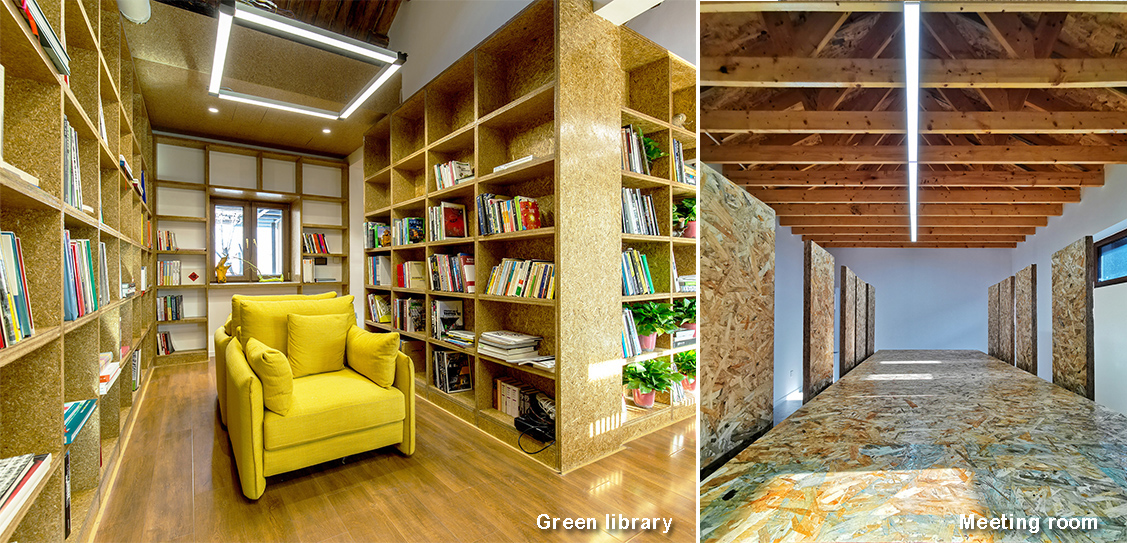This village project in the suburbs of Beijing focuses on the problem of indigenous resident loss in rural areas of China. The overall goal is to improve residential comfortableness and realize energy self-sufficiency, function conversion and rural revival by means of green transformation.
The main goal is to explore the technical possibilities and construction realizability of assembled nearly zero energy rural house reconstruction.
The project uses scientific research funds from the government and the funds raised by the design institution itself. The client is Tenio Beijing Architecture and Engineering Co., Ltd .The project is led by the architect and is constructed in EPC mode. It was completed in two months on September 20, 2019 .
The courtyard divides the 402 sq m building into three parts of simple shapes, and air-tightness units are connected with passive house and stairwell wind tower to enhance heat radiation in winter and guide the natural ventilation in transitional seasons. The sloping roof uses skylights to achieve natural lighting and uses photovoltaic tiles to provide electric energy.
The building is an experiment of low-cost assembled residential modules. The composite model is consisting of light steel system and OSB board. The standard residential modules from the structure to the interior decoration are completed in the factory, and three modules are combined to a residential unit of complete functions on site.
The project comprehensively applied light steel structure module, timber frame system, copper plate, photovoltaic tiles, color film photovoltaic and other new materials.
All the information about how to enter the 2020 WAN Awards is here.
We are very happy to offer support so please don’t hesitate to email Georgia, WAN Awards Event Coordinator with any questions at Georgia.Baily@haymarket.com.
Last year more than 40 countries took part in the WAN Awards with strong showings from Europe, the Americas and Asia-Pacific. And we saw some truly outstanding projects, take a look at the winners from last year here.



